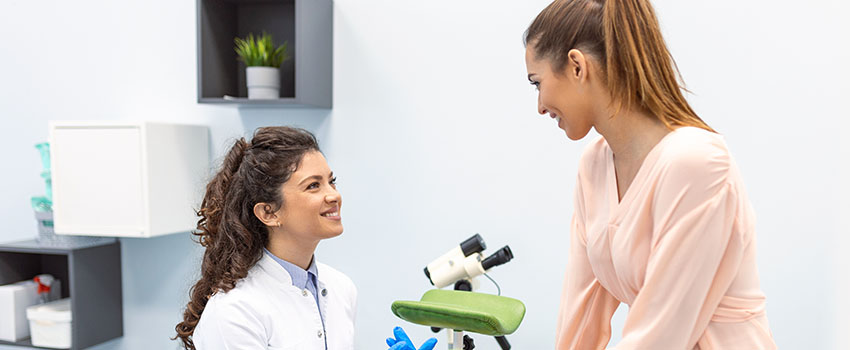
Pap Smears
A Pap smear test is a routine part of your annual pelvic examination that screens for cervical cancer and precancerous cells of the cervix. It's a safe and simple procedure you should have done regularly.
What happens during a Pap smear?
To collect a Pap smear sample, Dr Moodley will gently place a metal instrument called a speculum into your vagina, which allows the cervix to be seen. After inserting the speculum, Dr Moodley will begin by brushing tissue cells from your cervix.
What can I expect from my results?
The tissue samples are then sent to be analysed to track any changes in your cervix. The results will fall into one of the following categories:
- Normal: no abnormal cells were seen.
- Atypical cells: the cells are not normal or abnormal. This may be due to HPV, vaginal infections, or a processing issue in the lab. In this case, another pap smear might be required.
- Abnormal: the cells are precancerous or dysplastic. These will be further categorised as mildly abnormal or severely abnormal. These abnormal cells are caused by exposure to a sexually-transmitted infection called HPV, or Human Papillomavirus.
Abnormal cells, and even the presence of HPV, can tell Dr Moodley several different things. A Pap smear allows her to catch conditions very early and provide treatment as soon as possible.
How can I prepare for a Pap smear?
There are several steps you can take to prepare for your routine pap smear and to ensure the most accurate results, including
- Avoid sexual intercourse two days (48hrs) before the test.
- Schedule the test when you are not on your menstrual cycle.
- Avoid taking a shower 48 hours before the test.
- Avoid the use of tampons or any other devices that can be inserted into the vaginal canal for at least 48 hours before the test.